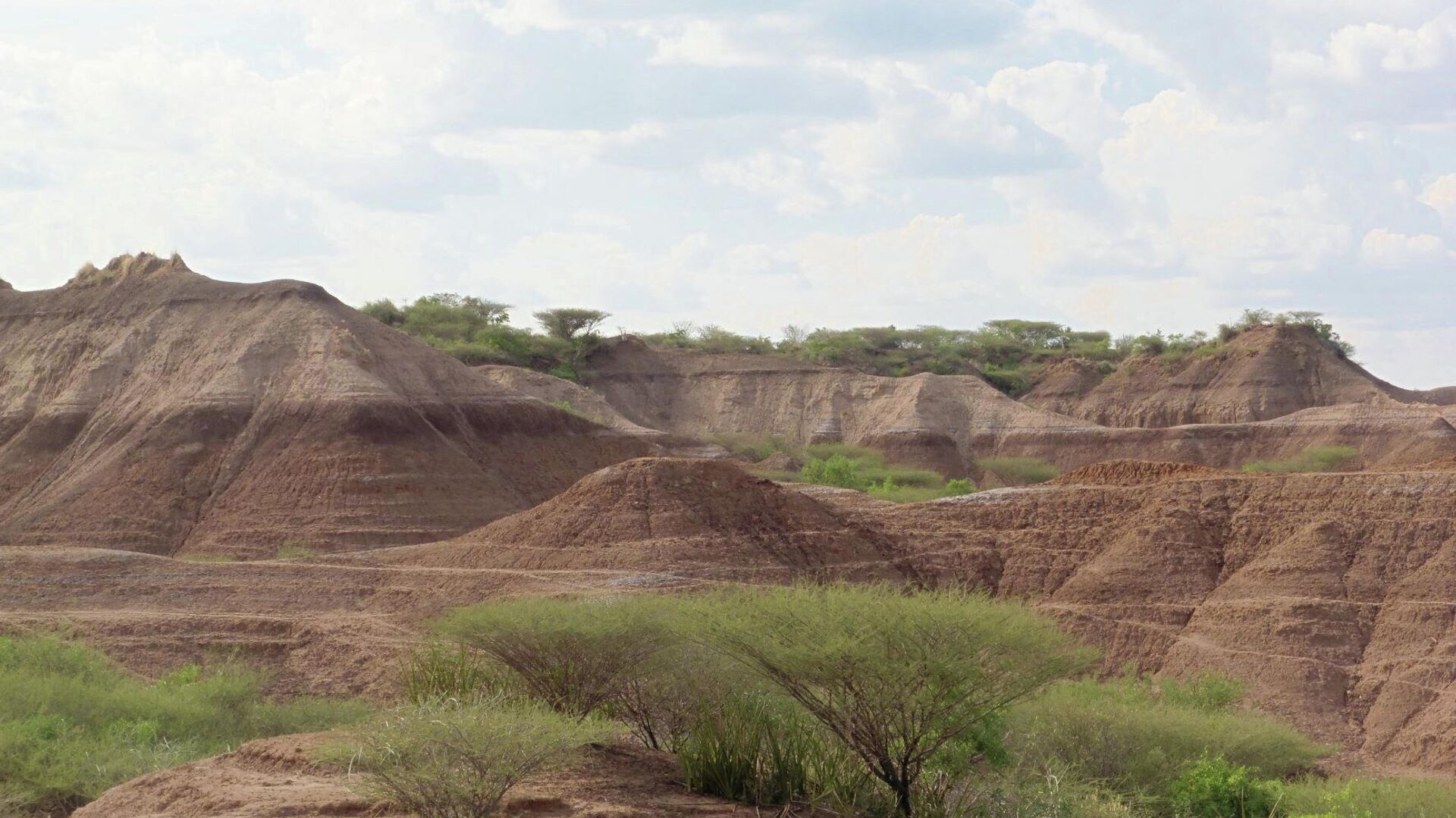https://sputnikglobe.com/20220112/oldest-fossils-of-a-modern-human-just-got-40000-years-older-study-finds-1092220826.html
Oldest Fossils of a Modern Human Just Got 40,000 Years Older, Study Finds
Oldest Fossils of a Modern Human Just Got 40,000 Years Older, Study Finds
Sputnik International
A new study published in scientific journal Nature has pushed back the date of the oldest human fossils from East Africa by close to 40,000 years.
2022-01-12T23:00+0000
2022-01-12T23:00+0000
2022-01-12T23:00+0000
evolution
fossils
anthropology
https://cdn1.img.sputnikglobe.com/img/07e6/01/0c/1092220672_0:93:1773:1090_1920x0_80_0_0_934ff04a921c121af382433eefd30773.jpg
The fossils, known as the Omo remains, were a combination of bone and skull fragments and had proven difficult to date. Geologists, using stratigraphic analysis, in which vertical and lateral relationships of different rock formations are analyzed, were able to determine the minimum age of the fossils. However, a more precise dating eluded the scientific community for a half-century after their discovery.The key clue to refining the date of the Omo remains was the analysis of a fine layer of ash that was found surrounding the fossils.New techniques and the use of historic volcanic events allowed the research team to link the ash to a major eruption of a volcano named Shala.The study found the layer of ash to be some 233,000 years old, with a 20,000-year margin of error.The new date does not make the Omo fossils the oldest human remains. Remains found in Morocco in 2017 were dated to 300,000 years old and significantly changed the chronology of humanity’s migration out of Africa.Aurelien Mounier, a co-author of the study, believes the new dating restores the conventional theory around human evolution and migration.While humanity’s migration out of the East African region known as the “cradle of mankind” may have been earlier than previously believed, the new dating of the Omo fossils and their modern characteristics lend credence to conventional ideas of human evolution and migration.
Sputnik International
feedback@sputniknews.com
+74956456601
MIA „Rossiya Segodnya“
2022
News
en_EN
Sputnik International
feedback@sputniknews.com
+74956456601
MIA „Rossiya Segodnya“
Sputnik International
feedback@sputniknews.com
+74956456601
MIA „Rossiya Segodnya“
fossils, modern human, study,
fossils, modern human, study,
Oldest Fossils of a Modern Human Just Got 40,000 Years Older, Study Finds
A new study published in scientific journal Nature has pushed back the date of the oldest human fossils from East Africa by close to 40,000 years. The fossils, first discovered in Ethiopia at the Omo Kibish site in 1967, were determined in 2005 to be at least 195,000 years old.
The fossils, known as the Omo remains, were a combination of bone and skull fragments and had proven difficult to date. Geologists, using stratigraphic analysis, in which vertical and lateral relationships of different rock formations are analyzed, were able to determine the minimum age of the fossils. However, a more precise dating eluded the scientific community for a half-century after their discovery.
The key clue to refining the date of the Omo remains was the analysis of a fine layer of ash that was found surrounding the fossils.
Celine Vidal,
the main author of the study,
said of the layer of ash, "At the time that was nearly impossible since the ash was so fine, almost like flour.”
New techniques and the use of historic volcanic events allowed the research team to link the ash to a major eruption of a volcano named Shala.
The study found the layer of ash to be some 233,000 years old, with a 20,000-year margin of error.
The new date does not make the Omo fossils the oldest human remains. Remains found in Morocco in 2017 were dated to 300,000 years old and significantly changed the chronology of humanity’s migration out of Africa.
Aurelien Mounier, a co-author of the study, believes the new dating restores the conventional theory around human evolution and migration.
"Omo I is the only fossil that has all the morphological characteristics of modern man," said Mounier.
While humanity’s migration out of the East African region known as the “cradle of mankind” may have been earlier than previously believed, the new dating of the Omo fossils and their modern characteristics lend credence to conventional ideas of human evolution and migration.

